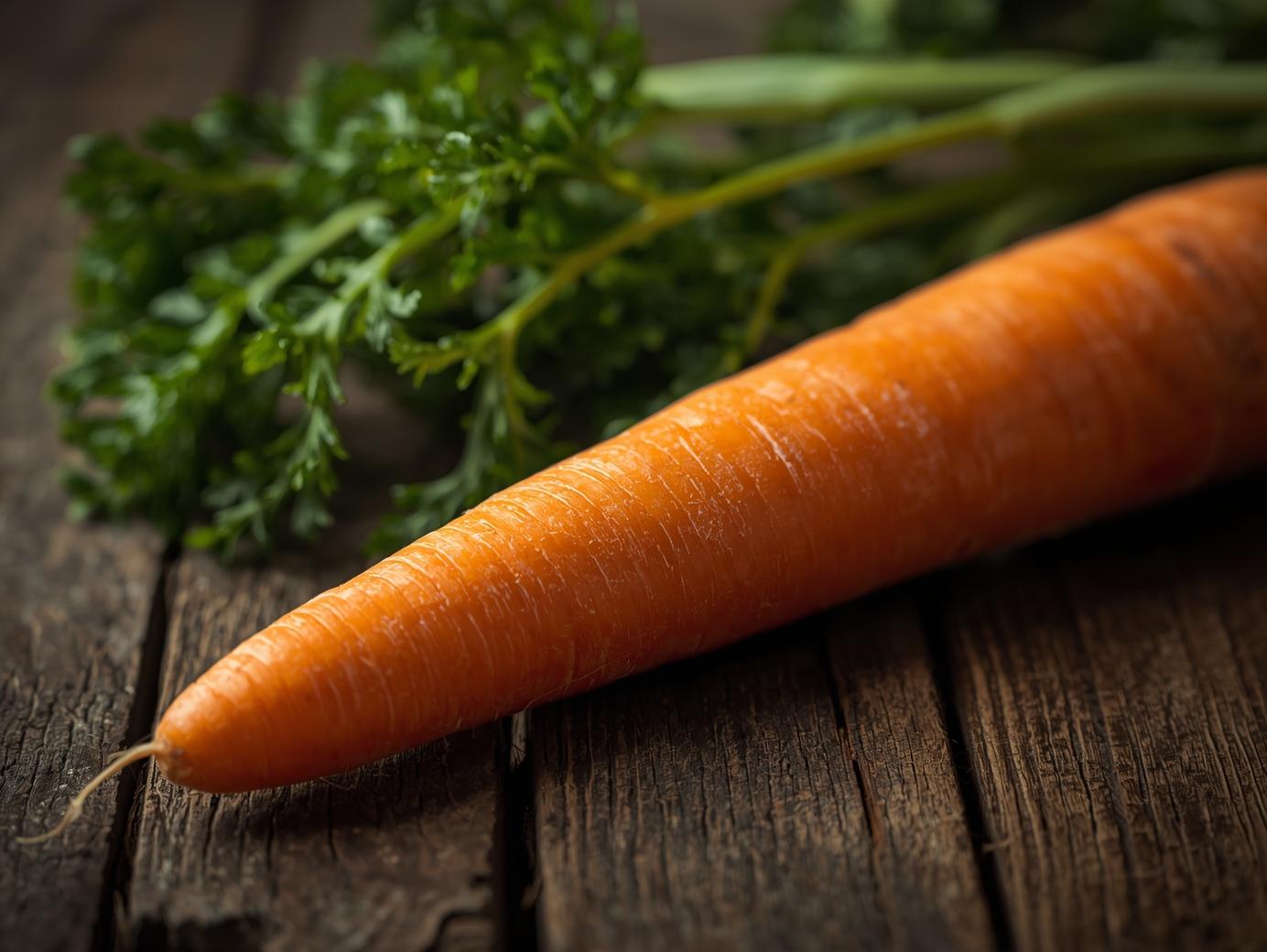Site Preparation
Preparing the right site is the first crucial step toward growing healthy and flavorful carrots in your courtyard. Choose a location that receives full sunlight for at least six to eight hours daily. Carrots thrive in well-aerated and loose soil, so ensure the planting bed is free from stones, roots, or hard clumps that might distort root development. Raised beds or deep containers are ideal for urban courtyards, providing enough depth for roots to grow straight and long.
Before sowing, loosen the soil to a depth of at least 10 to 12 inches using a garden fork or tiller. Mixing organic compost or well-rotted leaf mold enhances soil fertility and improves its texture. Avoid adding fresh manure just before planting, as it can lead to forking or misshapen roots. Proper site preparation ensures a balanced environment for germination and helps your carrots grow evenly from seed to harvest.
Soil Selection
Selecting the perfect soil for carrot cultivation can make a significant difference in yield and quality. Carrots prefer light, sandy loam soil that drains well while retaining enough moisture to support root development. Heavy clay soils can hinder root expansion, leading to short or twisted carrots. The ideal soil pH ranges from 6.0 to 6.8, slightly acidic but rich in organic matter. Conducting a soil test before planting helps identify nutrient deficiencies and allows for the necessary adjustments.
In home courtyards across the USA, enhancing native soil with compost or aged garden mix ensures a fine, crumbly texture that carrots love. If the natural soil in your area is too compact, consider using deep containers or raised beds filled with high-quality potting mix. The goal is to create a light, fluffy medium that encourages straight, uniform root growth without obstruction.
Planting
Carrot planting begins with careful seed selection and proper timing. In most U.S. regions, carrots can be sown directly into the soil from early spring through late summer, depending on local climate conditions. The seeds are tiny, so mix them with sand for even distribution. Sow them about a quarter-inch deep in rows spaced 12 to 18 inches apart. Keeping the soil consistently moist during germination is essential, as dry conditions can prevent seeds from sprouting evenly.
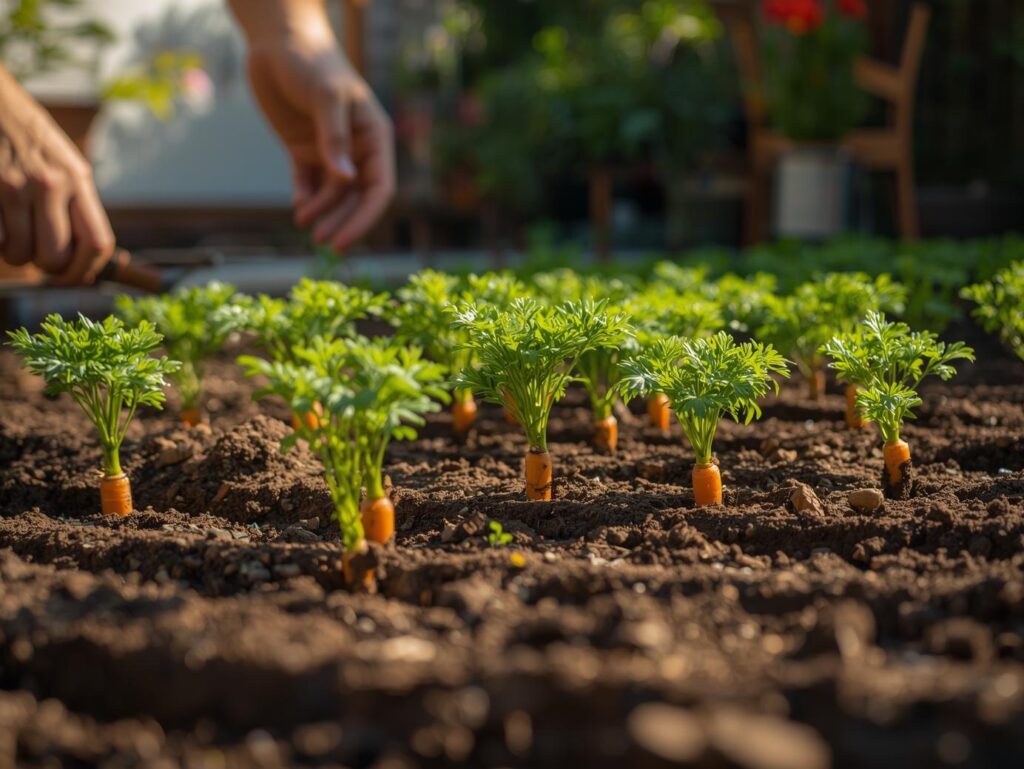
After seedlings emerge, thin them to about two inches apart to allow each plant sufficient room to develop. Crowded carrots often produce small or misshapen roots. For courtyard gardens with limited space, consider growing shorter or round carrot varieties that thrive well in containers. Providing proper spacing and a loose, nutrient-rich soil base sets the foundation for a healthy and abundant carrot crop.
Watering
Water management plays a vital role in carrot development. Carrots need consistent moisture throughout their growing period, especially during germination and root formation. Inconsistent watering can cause cracking, poor texture, or uneven growth. Aim to provide about one inch of water per week, either through rainfall or irrigation, ensuring the soil remains evenly moist but never soggy.
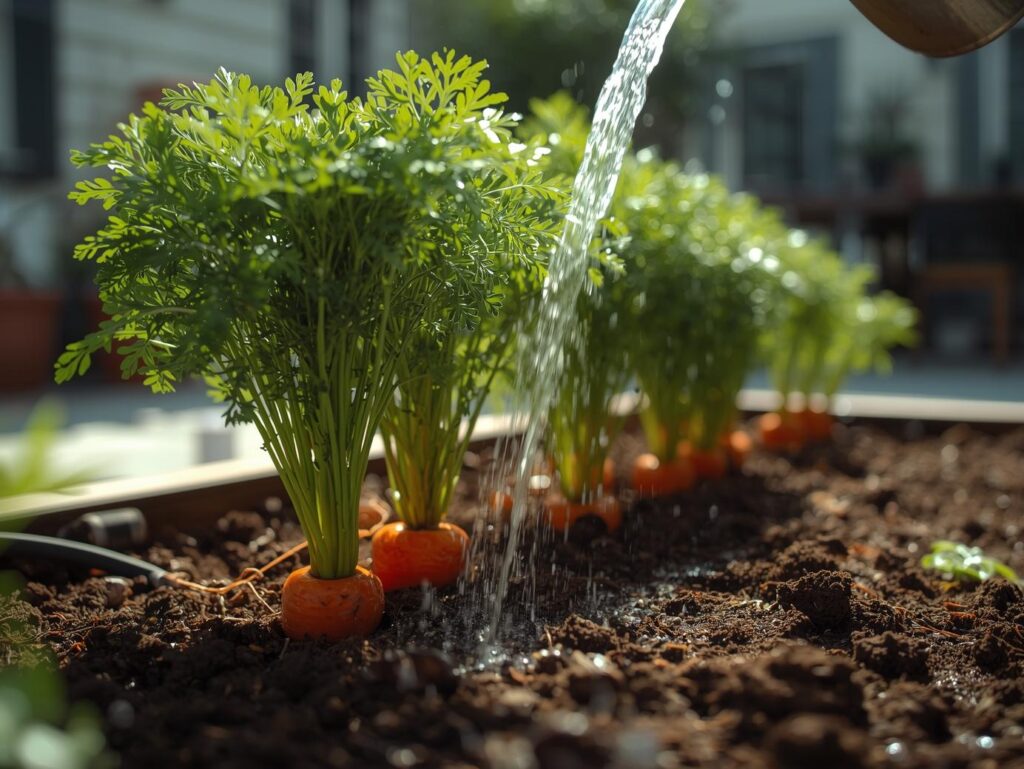
For home courtyards in warmer U.S. regions, early morning watering helps minimize evaporation and keeps the soil cool. A layer of mulch around the plants helps retain moisture and suppress weeds. Drip irrigation systems are excellent for maintaining steady soil hydration without disturbing delicate seedlings. Consistency is key; deep, infrequent watering encourages the roots to grow downward, resulting in well-shaped, flavorful carrots.
Fertilizing
Carrots are light to moderate feeders that benefit from balanced nutrition throughout the growing season. Before planting, incorporate a low-nitrogen, high-phosphorus fertilizer to promote root development rather than excessive foliage. Overly rich nitrogen levels encourage leafy tops but result in small or split roots. A soil enriched with organic compost generally provides sufficient nutrients for a strong start.
Once seedlings are established, side-dress with a potassium-rich organic fertilizer every three to four weeks. Liquid seaweed extract or bone meal can improve root size and sweetness. Avoid fresh manure and high-salt fertilizers, as they can damage delicate roots. Regular feeding, coupled with good soil management, ensures a steady supply of nutrients that keeps your carrots healthy and vibrant throughout the growing season.
Pruning and Training
Carrots do not require traditional pruning like fruiting plants, but some light maintenance helps maintain healthy growth. Removing weak or overcrowded seedlings early allows the strongest plants to flourish. Trimming away any yellow or damaged leaves also improves airflow and reduces the risk of fungal issues, especially in humid climates.
Training is not needed for carrots since they grow underground, but managing the foliage is still important in courtyard settings. Keeping the bed tidy and ensuring enough space between plants allows sunlight to reach all areas, promoting even growth. A clean and well-maintained garden bed not only enhances the plant’s health but also gives your courtyard a neat, productive look.
Pest and Disease Control
Carrot plants can fall prey to a few common garden pests, including carrot flies, aphids, and nematodes. Floating row covers can help prevent insects from laying eggs near your plants. Regular inspection and immediate removal of infected foliage can stop pest infestations before they spread. Beneficial insects such as ladybugs and lacewings are natural predators that help keep pest populations under control.
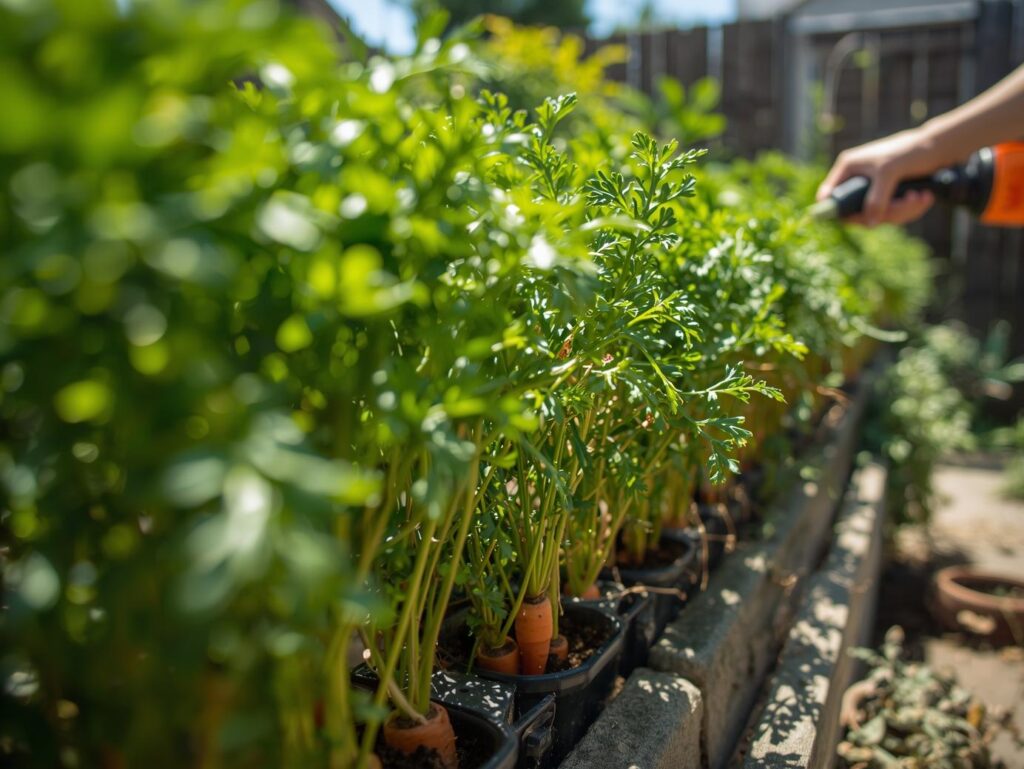
Fungal diseases like powdery mildew and leaf blight can occasionally affect carrots, particularly in damp or poorly ventilated courtyards. Ensure proper air circulation and avoid overhead watering to reduce moisture on leaves. Crop rotation is also effective in preventing soil-borne diseases. By practicing good garden hygiene and using organic control methods, you can maintain a healthy and productive carrot patch year-round.
Fruiting and Harvest
Carrots don’t produce traditional fruits, but harvesting them at the right stage ensures top quality and taste. Most varieties mature in 60 to 80 days, depending on the climate and type. The best time to harvest is when the roots reach a desirable size and their tops begin to push slightly above the soil. Gently loosen the soil before pulling to avoid breaking the roots. Harvesting too late can make the carrots woody or less sweet.
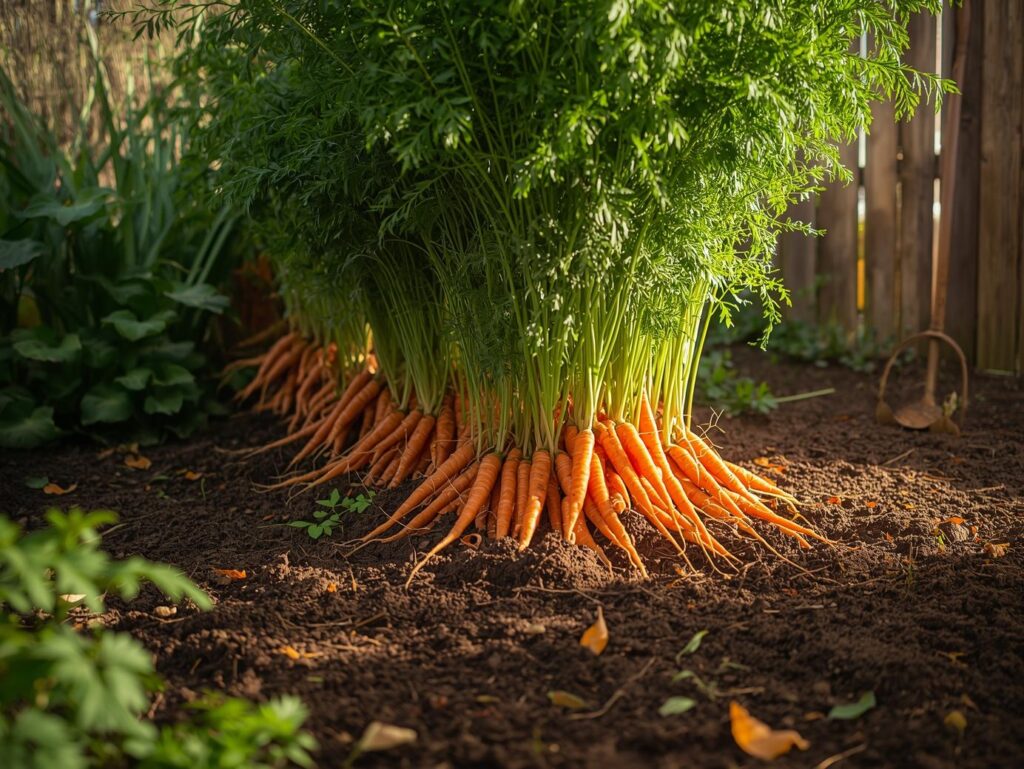
In cooler U.S. regions, fall-grown carrots often develop a sweeter flavor after exposure to light frost. Once harvested, remove the green tops immediately to prevent moisture loss. Store them in a cool, dark place or refrigerate in a perforated bag for long-lasting freshness. Regularly timed harvesting keeps your garden productive and ensures a steady supply of crisp, homegrown carrots.
